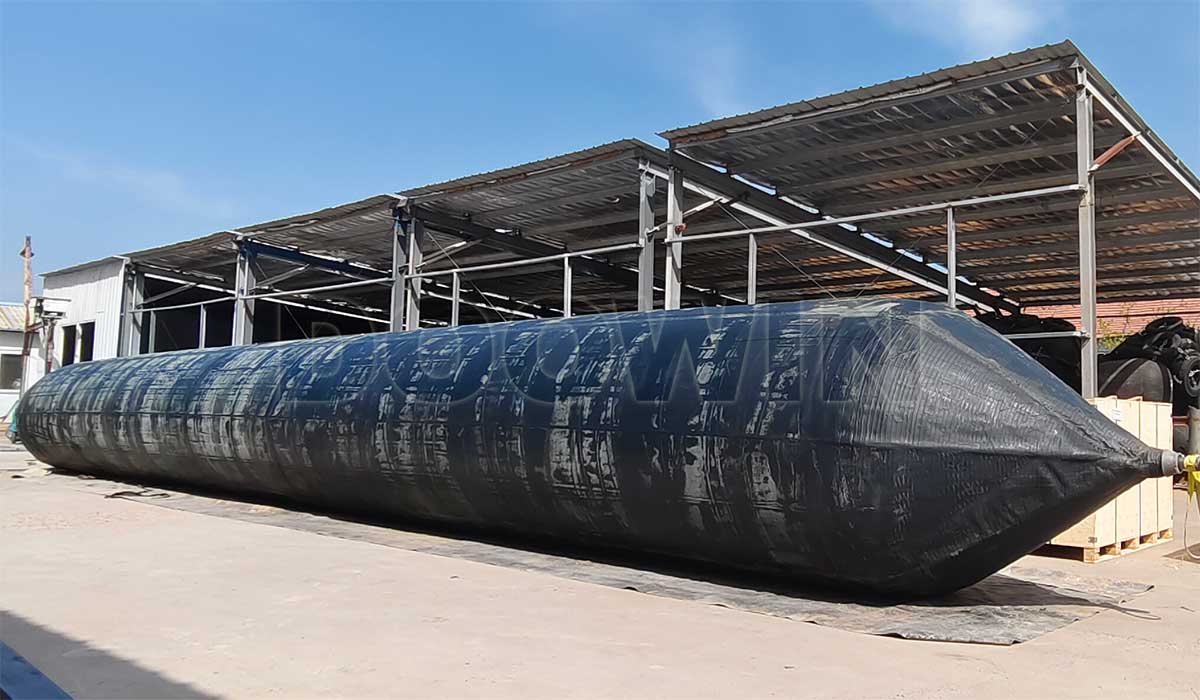Marien rubber airbags are made of rubber with synthetic-tire-cord layers used for ship launching/landing, marine salvage, and heavy lifting work. These rubber airbags are sturdy and durable, with a service life of more than 6 years. However, it will inevitably be pierced by some overlooked sharp objects during use. At this time, it is very necessary to repair the airbag correctly. A good repair can restore the full performance of the airbag.
There are two ways of patching, which are hot and normal temperature sulfuration. Now, we introduce the hot sulfuration patching as follows:
Mark the patch location
First inflate the airbag and clean the surface of the airbag with clean water in order to find out where the airbag ruptures more accurately. Identify and mark the puncture marks of the airbag.
Clean up repair parts
Use an angle grinder to polish the wound area of the airbag. The location of the sanding should be at least 10 cm larger than the wound of the airbag.
Structure layered segregate by 2~6 layers depends on the size of flake leakage area. For example, leakage area approx. 1000mm or propagating fracture 50-70mm will be patched with 4-6 layers.
Note:
- The material of interleaving should be the same as the airbag. And the angle of the line also should be the same as the airbag body.
- The first layer of interleaving is ordinate, Length = the length of “would” + 50 x 2m
- The second layer of interleaving is biasing. The angle should be the same as the airbag’s body. And it should be 20mm bigger than the first layers.
- The third layer of interleaving also is biased. The angle should be contrary to the second layer. And it’s 20mm bigger than the second layer. The 4th ~ 6th layers is the analogy.
- Circular angle is required around the interleaving. The semidiameter is 40~50mm.
File the flake leakage area with sandpaper in a single way direction several times to ensure a clear and smooth surface surrounding the fracture area. Remember to clean it again with compressed air.
The whole process should ensure there is no unwanted particular embedded and dry up the airbag surface. Then brush up some owned made 502 glue with the ingredient of glue mixture of pure rubber material: petroleum base chemical of 1:8.
Patching process-use prepared mentioned layer to patch.
Vulcanizing press process-using the rack structure indicated below to carried out the vulcanizing process by heating up to 135 5. Press the flake leakage area with 0.08-0.12Mpa pressure for 40-50 minutes.
Inspection-check the patching area to ensure tight agglutination. The inflate the air bag for final checking.
Tightly plug the hole with a rubber plate and some glue, and then cover the hole with 3-4 layers of flexible cord rubber. Each layer will be glued and pressed firmly to eliminate air bubbles.
Tools needed: glue, brushes, airbag repair materials
Vulcanized patch
Use a hydraulic jack to press the heating plate, and use the airbag hole to fit the patch tightly. Open the Evergreen car repair kit and return one hour later. When the heating plate is not too hot, remove the socket.
Tools and materials needed: hydraulic jack, temperature controller, heating plate, bracket, insulation material
Different brands of airbags may have different rubbers and cords, and the vulcanization time may vary.
The ambient temperature also affects the curing time. Therefore, it is recommended to do a test experiment to find the best curing time






